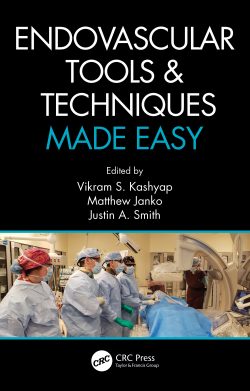This book deals with a potentially sight threatening complication – rupture of the posterior capsule – during cataract surgery. This handbook covers the management of this problem from 3 perspectives:
1.Identifying patients at higher risk and measures to manage such patients by surgical discipline
2.Intraoperative management of posterior capsular rupture (PCR) to minimize long-term complications
3.Post-operative care for a patient who has a PCR
Cataract surgery is the most commonly performed surgical procedure in ophthalmology and despite tremendous technical and technological advancements, PCR still occurs. PCR occurs both in the hands of experienced senior surgeons and the neophyte surgeons, although with a higher frequency in the latter group. Additionally, certain types of cataracts are prone to this development. If managed properly in a timely manner the eventual outcome may be no different from that of an uncomplicated case. However, improper management may lead on to serious complications with a higher incidence of permanent visual disability.
Written for experienced and not-so-experienced eye surgeons alike to understand and manage PCR.
Anatomy of the Crystalline Lens.- Anatomy of the Vitreous.- Incidence, Magnitude and Significance of the Problem.- Posterior Capsular Rents – Predisposing Factors.- Management Strategies for Cataracts with Pre-existing PCR.- How to Reduce the Incidence of Posterior Capsular Rupture – Surgical Pearls.- Posterior Capsular Rupture during the Phaco Learning Curve – Tips on How to Reduce the Incidence.- Posterior Capsular Rent – Early Diagnosis.- Posterior Capsular Rupture – Various Case Scenarios.-Management of Vitreous Disturbance and Basic Principles of Anterior Vitrectomy.- Staining of the Vitreous/Enhancing Visibility of Vitreous.-Bimanual Vitrectomy from Limbus.- Bimanual pars plana Anterior Vitrectomy.- Posterior Assisted Levitation (PAL).- IOL Options in the Presence of Posterior Capsular Rent.- ACIOL.- Iris Claw IOLs.-Sutured Scleral Fixated IOLs.- Unsutured Scleral Fixated IOLs.- Glued IOLs.- Management of Retained Lens Matter in the Postoperative Period.- Posterior Capsular Rent – Sequelae.- Postoperative Management of an Eye that has Suffered a Posterior Capsular Rupture. Dr. Arup Chakrabarti, MS, Chief Cataract and Glaucoma Services, Chakrabarti Eye Care Centre, Trivandrum, Kerala, India
This book deals with a potentially sight threatening complication – rupture of the posterior capsule – during cataract surgery. This handbook covers the management of this problem from 3 perspectives:
1.Identifying patients at higher risk and measures to manage such patients by surgical discipline
2.Intraoperative management of posterior capsular rupture (PCR) to minimize long-term complications
3.Post-operative care for a patient who has a PCR
Cataract surgery is the most commonly performed surgical procedure in ophthalmology and despite tremendous technical and technological advancements, PCR still occurs. PCR occurs both in the hands of experienced senior surgeons and the neophyte surgeons, although with a higher frequency in the latter group. Additionally, certain types of cataracts are prone to this development. If managed properly in a timely manner the eventual outcome may be no different from that of an uncomplicated case. However, improper management may lead on to serious complications with a higher incidence of permanent visual disability.
Written for experienced and not-so-experienced eye surgeons alike to understand and manage PCR.
Comprehensive coverage of only one single complication in cataract surgery





